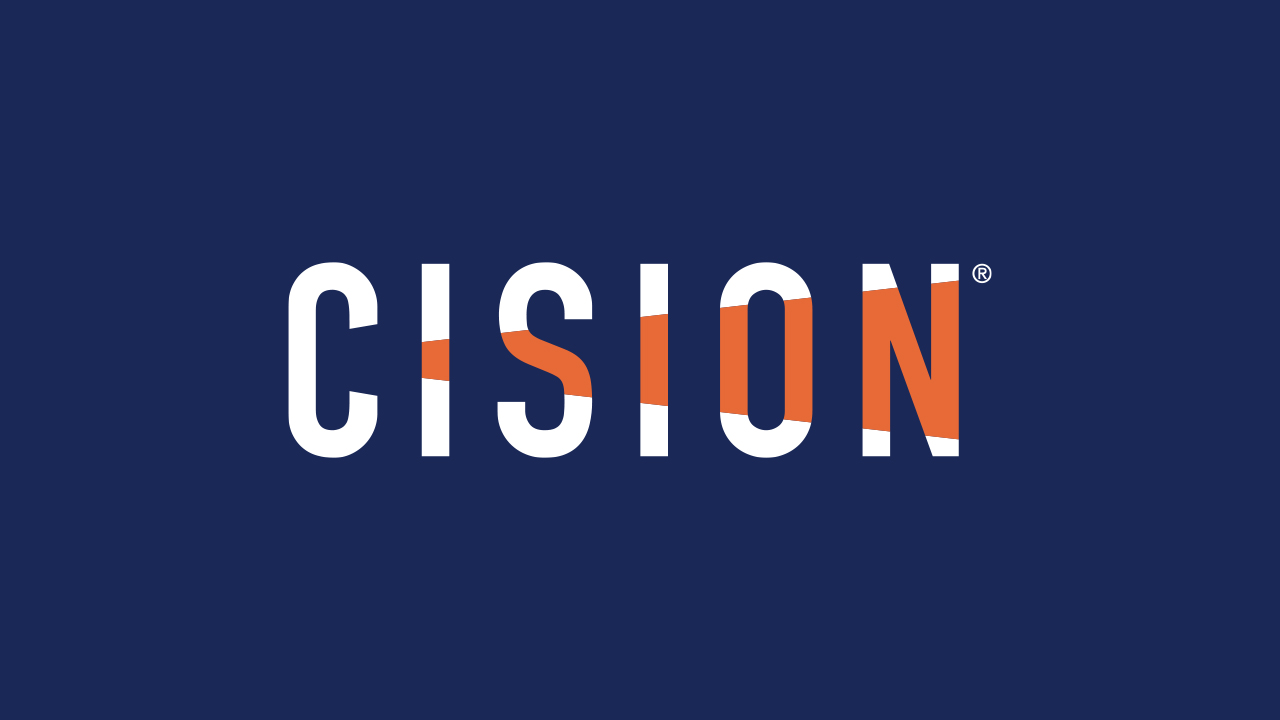Content amplification is one of the most important pillars of any marketing strategy. After all, your killer content is only effective if people see it. You can spend millions of dollars on a new ad campaign but without a reach strategy you may fail to deliver an effective return.
Businesses large and small use content amplification tools to expand their digital influence. Whether it's on social media platforms, online news sites, or even email marketing, amplifying content is key to generating positive returns.
This guide will take you through the core aspects of digital content amplification and explain where it sits within an overall marketing strategy. We're not looking at newspaper ads or billboard marketing, but how you can boost your reach online. Find a content amplification tool that meets your needs and improve your campaigns today!
Understanding Content Amplification
Let's start with the basics. Content amplification aims to enhance the visibility and impact of valuable content. People use it to ensure target audiences receive and engage with valued material.
For example, a basketball team might want to boost local ticket sales for a big game at the weekend. The content marketing department decides to amplify its local ad content and target potential fans on Facebook. Using a content amplification tool means they zone in on specific demographics.
Fundamentals of Content Amplification
Content amplification involves strategically using various channels and methods to boost the reach of content beyond its original platform. For example, a coffee shop that primarily uses Instagram to showcase its new coffee beans might choose to amplify its messages by expanding into other channels, and deepening their marketing techniques.
The two key components to digital content amplification are:
Channels: Leveraging social media, email, paid ads, online news mentions, backlinks, and more.
Techniques: The use of SEO, influencer collaborations, link building, and social sharing.
To amplify content effectively, it’s essential to produce high-quality, engaging materials that appeal to your target audience. This forms the foundation upon which amplification tactics can be built, thereby enhancing the content's reach.
Content Amplification vs. Content Marketing
It's important to know the difference between content amplification and content marketing, so you can form a strategy that encompasses both.
Digital content marketing concerns the creation and distribution of content online to attract and retain a defined target audience. Content amplification is a subset that focuses specifically on increasing the reach of existing content.
The idea is to amplify your content – whether it be organic, marketing-led, or anything else – in order to help reach your overall marketing goals. Amplifying therefore needs to align with your overarching marketing strategy.
Role of Content Amplification in Marketing
Any marketing strategy should include content amplification efforts to help you meet your goals, such as:
Brand Awareness: Amplified content can quickly spread, familiarizing more people with your brand.
Lead Generation: By reaching a broader audience, you can increase the probability of generating new leads.
Customer Engagement: By encouraging interactions and feedback, you can forge stronger customer relationships.
You can ensure valuable content reaches a wider target audience and achieves higher conversion rates by being strategic with your amplification. Remember, amplification is just part of the wider marketing sphere and needs to be focused in order to generate the best results.
Content Creation for Amplification
As we've stated above, amplification is a subset of a content marketing strategy. Another subset is content creation. It's important to factor amplification into your creative decision making. If you don't, you risk creating content that can't be amplified.
For example, you make a string of videos for Instagram Reels promoting a new shampoo. The videos look great and you want to amplify on your successful social media accounts on LinkedIn. However, compatibility issues mean your content looks terrible on the business-focused platform. This is the kind of thing that would be considered carefully in a content amplification strategy – before the content was created.
Here's what you need to consider when creating content for amplification.
High-Quality Content Development
The cornerstone of any amplification strategy lies in high-quality content development. Quality content is not just about correct grammar and coherence; it is about delivering value and insight that sets your content apart.
Things to focus on include:
Accuracy: Ensuring all information, whether written or verbal, is fact-checked and up-to-date
Originality: Crafting content that is unique and engaging
Relevance: Topics must be current and appealing to your audience
This might sound obvious but being across these factors will help you create engaging content that can then be amplified.
Aligning Content with Audience Needs
Content must reflect the interests and needs of an audience if it is going to resonate. You can determine this when using content amplification tools that help you:
Analyze data to understand your audience preferences
Segment your audience to tailor content appropriately
Solicit feedback to continually refine your approach
Content Creation Process
Once you have audience data and a steer on how to develop exceptional content, it's time to get creating. The four stages to creating content are:
Research: Thorough exploration of subjects to cement the foundation of knowledge, using audience data to help.
Planning: Strategic development of a content calendar, from ideation to delivery.
Execution: Using a combination of words and multimedia to create your content and publishing it.
Review: Rigorous quality checks to ensure standards and KPIs are met.
Remember, you can only amplify the content you have, so it's important to ensure your creations are bullet-proof and compatible across multiple online platforms.
Amplification Tools and Platforms
In this section, we explore the array of tools designed to enhance the reach of your existing content, along with the criteria to select the most suitable one and the platforms where these tools can be integrated effectively.
Overview of Content Amplification Tools
Content amplification tools are designed to extend the reach of company content beyond its original audience. These tools can take various forms, such as social network sharing buttons, content discovery engines, or targeted ads platforms.
An amplification tool's core purpose is to maximize the visibility and impact of content that you've already created. By employing these tools, we can ensure our existing content works harder for us, engaging more prospective customers and driving additional traffic to our content hubs.
CisionOne
CisionOne allows users to assess billions of online data points to curate relevant content before amplifying it on selected channels. Track your content and PR mentions, analyze link uptake, find areas where you can amplify, and build dashboards to understand social media penetration, using CisionOne's intelligent AI-driven solutions.
Read more about CisionOne's digital content amplification tool here!
Brandwatch
Brandwatch uses social listening to assess audience attitudes towards everything from product and brand loyalty, to politics and eating habits.
Its vast network allows users to understand current and potential audiences, and create effective, targeted marketing campaigns. Amplification forms part of the campaign strategy and the Brandwatch tool allows you to swiftly identify areas to boost your presence.
Semrush
The SEO-focused marketing platform Semrush helps users amplify their searchable content, such as news articles, a blog post, and user guides. You can target specific keywords and user identities to focus your content and enhance your search rankings.
Drive effective search engine optimization campaigns and fine-tune your content to fit multiple platforms as you go. You can also use Semrush’s ImpactHero tool to obtain real-time data and tweak your low- and mid-performing content in an instant.
Converge
An ideal B2B content amplification tool, Converge specialises in self publishing. Users create their own content and publish on the platform.
It's then disseminated across its website, social channels, business influencers and partner newswires. This type of digital content amplification is ideal for companies looking to form B2B relationships and generate leads.
Choosing the Right Amplification Tool
We've listed four different content amplification platforms above. When selecting one, it's critical to consider your specific needs and goals. Key factors include:
Content Type: Whether your content is visual, written, or multimedia, different tools may be more effective.
Audience: Understand where your target audience congregates online and select tools that can reach them there. For example, Converge is a better tool for targeting a B2B audience.
Budget: Amplification tools come with varying cost structures, from pay-per-click to subscription models. CisionOne has a tiered model that works for all company sizes.
Integration: Consider how well the tool integrates with your existing marketing stack for streamlined operations.
Social Media and Content Amplification
The never-ending evolution of social media means creators have to be sensitive to change in order to achieve content amplification across multiple platforms. If your content can't adapt then it won't make the desired impact.
Let's look at how social media posts affect content amplification.
Leveraging Social Media Channels
Utilizing social media platforms means tapping into a dynamic way to share content and stimulate organic traffic. Each platform caters to unique demographics and content formats, making it essential to tailor your approach.
For instance, Facebook and Instagram excel with visual content, while X and LinkedIn serve well for timely, text-focused updates. Think about what social accounts you have and where your influence lies. Can you take content from one channel and amplify it on another?
Facebook: Ideal for broad audience reach with varied content types.
Instagram: Highly visual, perfect for creative storytelling.
TikTok: Dynamic, ideal for trends and flash marketing.
X: Fast-paced, suitable for news and real-time engagement.
LinkedIn: Professional audience, effective for B2B content.
Social Media Marketing Strategies
The right strategy on social media networks can be the difference between content that fades into obscurity and content that resonates. It's important to create shareable content that is tailored to the specific audiences of each social channel, but which can also spread across platforms.
This takes creativity and a reliable content amplification strategy that complements an overall marketing plan.
Paid promotion and the use of influencers, for example, are strategic options that many marketers use to amplify content across multiple channels. By using content amplification tools they are able to track there success of these ventures and whether they were worth the expense.
Engaging with Niche Communities
We often make the mistake of assuming the "digital sphere" is one big community. Of course, audiences actually form their own niche communities and demographics. Successful content amplification strategies look at smaller, focused groups within larger social channels that can guarantee better engagement.
For example, launching a targeted ad campaign for Facebook groups dedicated to learning the acoustic guitar could be perfect for a musical instrument retailer. Identifying a targeted audience means the retailer can amplify its relevant messaging.
Paid Advertising and Sponsored Content
Not everyone has access to a paid advertising budget but even one promoted tweet could be the difference between a successful and unsuccessful campaign. Leveraging paid-for ads and sponsored content is vital for boosting your visibility and reaching targeted users effectively.
Paid digital ads can significantly enhance online presence. With platforms like Google Ads and Instagram Ads, you can promote content directly in front of users searching for related topics. This may cost money but it's an amplification solution that often works.
Here's how to make the most of these tools:
Selecting the Right Platform: Choose the platform that aligns with your audience's preferences and behaviors. If X is your primary platform, try promoted tweets first.
Setting a Budget: Decide on a sensible budget to manage costs while reaching optimal lead generation.
Sponsored content is slightly different to paid-for ads. Here, you place your brand or product within someone else's content.
For example, you might pay your downtown soccer team to create a series of videos involving players and your brand. Sponsored content helps foster trust and align with a respected brand.
Strategy for Content Amplification
Now you know about creating content and the tools required for amplification, it's time to look at strategy. Whether it's an email marketing strategy, a social-first plan, or a push to improve your SEO, it's important to create a strategy and stick to it.
Here are the three steps when strategising:
1. Identify Success
The first question to ask is: what does success look like? If you intend to amplify your content, what are you targeting? Do you need to generate more revenue, gain a larger audience, or perhaps influence a section of society? Maybe you need to do all three. Set out your key performance indicators (KPIs) to measure success.
Then, circle back to your overarching marketing strategy. Do your amplification KPIs reflect what you're trying to achieve? If so, it's time to get started.
2. Incorporating Multiple Channels
The next step is to use a content amplification tool to launch and monitor your project. In doing so, you'll need to pull in data from multiple digital channels. This could be:
Social Media: Plugging accounts from X, Facebook, LinkedIn, etc into your tool so you can see everything in one place.
Email Marketing: Establishing and overseeing email marketing projects.
Paid Advertising: Tracking the success and failure of paid-for online advertising-for and sponsored content.
SEO: Monitoring how well your SEO strategy is performing.
3. Targeting Specific Audience Segments
The last stage of your strategy is to target audience segments before you begin amplifying your content.
You can use a tool like CisionOne or Brandwatch to assess online communities and find the right audiences. You can do this by:
Defining Audience Personas: Create profiles for different audience segments and consider what each segment responds best to.
Personalized Content: Tailor your content to address the specific needs of each segment.
Monitor Feedback: Use analytics and social listening tools to adjust our approach based on audience response.
By carefully targeting specific audience segments, your an ensure your content resonates and drives engagement.
Beyond Social Media: Expanding Reach
Social media is often the first channel businesses target when looking to amplify their brand or a specific campaign.
There are, though, other ways to angle your content amplification strategy in the right direction. Here are three:
1. Engaging Influencer Marketing
Influencers have a lot of power to amplify content. They often have loyal followers who trust their opinions. By partnering with the right influencers, you can tap into new customer segments.
It's important to ensure your influencer marketing approach is data-driven, by using a tool like Brandwatch. This means targeting influencers whose audience aligns with your ideal customer profile.
Top influencer marketing strategies include:
Identifying the right influencers through advanced analytics.
Crafting authentic, brand-aligned messaging for influencers to share.
Tracking campaign performance to measure ROI and adjust strategies accordingly.
2. Utilizing Email Marketing Strategies
Email marketing can often be a hidden cornerstone of any content amplification strategy. Through segmentation and personalization, it's possible to deliver targeted content that resonates with an audience.
To do this effectively, you need to focus on crafting compelling email campaigns that pique interest and drive engagement.
Each email aims to provide value, reinforce brand identity, and prompt readers to take action.
Email marketing best practices:
Grouping subscribers based on behavior and preferences.
Offering exclusive, high-quality content that speaks to each segment.
Utilizing metrics to refine future email campaigns for better results.
3. Partnering with Media Outlets
A third way to expand reach is through forming alliances with respected media outlets. By distributing press releases and engaging in co-promotional opportunities, it's possible to increase visibility across publications that our target audience trusts.
Owned media, like a company blog or whitepapers, are complemented by earned media that adds credibility and broadens our presence in the market.
Key steps for successful media partnerships:
Developing a compelling press release strategy to capture media attention.
Identifying and reaching out to media outlets with aligned audience demographics.
Fostering long-term relationships for ongoing content distribution opportunities.
Amplification Measurement and Optimization
Measuring the success of an amplification drive is important if you want to repeat your strategy again and again. It will also inform your overall marketing plan and shape how you do things next time.
It requires analyzing engagement data, adjusting content based on insights, and enhancing your content's visibility across search engines and social media channels.
By using a tool like CisionOne, you can:
Analyze Content Performance
Keep abreast of the KPIs related to your amplified content and see what's successful and what isn't. Look at metrics like the average time on page, bounce rate, interaction with social posts, and sentiment analysis. Determine how well your content resonates with your audience.
Use Analytics for Content Adjustment
Once armed with your analysis, you can begin to make adjustments to your content. Perhaps you need to amplify on a different channel. Maybe the data is showing you it's time to double down on your existing strategy and generate even greater returns.
Or, the analysis might highlight an alarming risk that you are spending hard-earned dollars on an ad campaign that simply isn't resonating. In this instance, it's time to act fast and amplify elsewhere.
Optimize Next Time
Finally, it's time to plan your future content. Armed with your data, you can begin to optimise your next strategy and shape it to better fit your goals.
This might come in the form of improved video quality on TikTok, a better keyword optimisation strategy for Google, or perhaps a more reactive customer support response on X.
By optimising your content, you are reducing the need to amplify next time because you already know where and which audiences to target.
Advanced Amplification Tactics
Finally, it's time to look at some of the more advanced techniques you can use in a content amplification strategy.
These tactics are ideal for those who are already midway through a marketing plan and are at the stage of fine-tuning or redirecting their strategy.
1. Content Syndication and Guest Posting
Content syndication involves the strategic sharing of articles, a blog post, or other content pieces on third-party platforms to reach a broader audience.
Cision's PR Newswire tool is perfect for syndication.
It is crucial to partner with sites that have a high domain authority. This helps boost your content's visibility and search engine rankings.
Guest posting, on the other hand, is published direct on another company's or person's website. This not only helps in gaining access to an audience but also in building valuable backlinks.
Key approaches include:
Selecting reputable platforms for syndication.
Tailoring content for the target platform’s audience.
Engaging in guest posting by contributing high-quality content to relevant sites.
2. Leveraging Employee Advocacy
Happy employees are more likely to advocate for the brand or product they work on. This social sharing is crucial for the amplification of content. It's primarily organic but you can encourage and incentivise employees to talk up your brand or product.
This creates a ripple effect that can significantly increase the reach of your content.
Key approaches include:
Implementing a formal employee advocacy program.
Providing easily shareable content to employees.
Monitoring and measure the impact of employee shares.
3. Effective Use of Press Release Distribution
Utilizing press release distribution services, such as PR Newswire, is a powerful way to amplify content. By disseminating press releases to multiple outlets, news can gain the attention of journalists, bloggers, and potential customers.
From there, you can form deeper relationships with individuals and add meaning to your amplified content.
Key approaches include:
Crafting compelling press releases with newsworthy angles.
Selecting a distribution service like PR Newswire for its wide-reaching network.
Measuring the performance and pick up of each press release to fine-tune our strategy.








